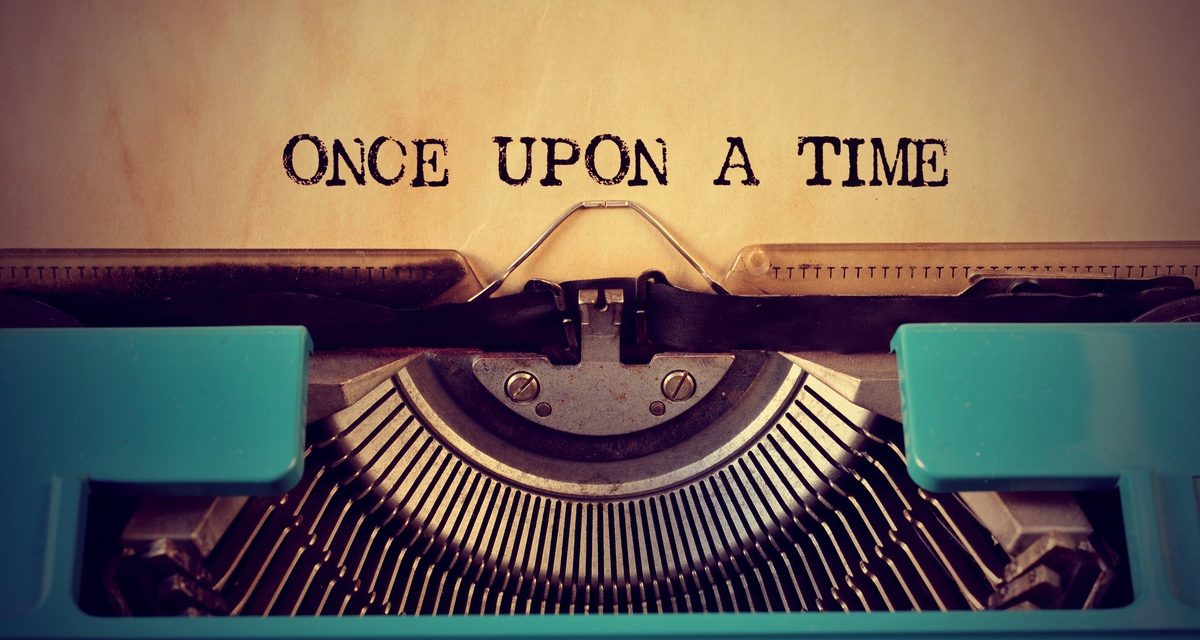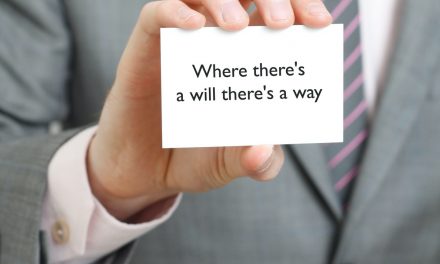How to build your expert status with personal anecdotes
Deep in the bowels of a West End theatre, there’s an old seat – long since discarded.
Blow off the dust and you’ll see a faded number. You can just about read it:
“13”.
It was removed from Row Q of the stalls in a refit. But I’m told it’s still there, flea-bitten and ragged. And if you check the underside, there’s still a wooden panel – containing a dent that was made 30 years ago by none other than…
…My head.
It’s true. In fact, if you go to see Wicked, you can ask them – maybe they’ll let you see it?
Because that’s where my head collided (at speed) with the underside of the seat. One fateful night at London’s Apollo Victoria.
I ought to explain…
Back in my student days at UCL, I worked at this theatre. Long before Wicked came along, it was home to Starlight Express – Andrew Lloyd Webber’s tuneless musical where the whole cast is on roller skates, pretending to be the engines and carriages in a kid’s train set.
(Now, if I add that I’m not much of a skater, maybe you can guess the ending?)
I did every job in that place. Box Office. Bar. Usher. Occasional stage crew. And once or twice a month, night-watchman.
Yep, they gave me the keys and a torch, switched off the lights, and left me alone in the place. From kicking-out time at midnight till the cleaners arrived at 6am, I’d be there, rattling around in the dark, hoping all the tales of ghosts were fake – and jumping out of my skin every time the rickety backstage lift moved of its own accord.
Anyway – after a few shifts, word spread front-of-house: “James is on overnights!”
And that was a VERY BIG DEAL!
See, the stage for that show was converted into a giant skating track. It stretched out around the stalls and across the front of the circle. And a small section of it jutted out from the stage, circling the best seats.
Truly, it was one of the best skating tracks anywhere in the world. So anyone would jump at the chance to skate on it, if only they could.
Plus, most of our usherettes were out-of-work dancers who longed to be in the show. They’d have donated kidneys to get 5 minutes’ practice.
So one by one, they made eyes at me – begging to be let in.
And I’m rubbish at saying “NO”!
Before I knew it, I was running an impromptu skating club (that could have got us all fired). They’d come to the stage door with our secret knock just after midnight. Then grab some skates from backstage…hack into the lighting grid…and spend the whole night whizzing around amid the empty seats.
I shouldn’t have joined in.
Definitely, shouldn’t.
I didn’t have their natural dexterity. Or balance. Or training! So I should have sat on the sidelines and watched.
But no. I figured “I can do that”…
…Then found out at 40 miles per hour that I was wrong. I couldn’t!
My first time round the perimeter track, I was crawling at a snail’s pace. Until one of the better skaters zoomed up behind me and pushed me at full force.
I was in serious trouble.
I came flying onto the stage, around the top of a ramp in a semi-circle – on a single wheel.
Inadvertently performing a stunt that the best skater in the show had taken 5 years to perfect.
I made it!
But I was lucky. Quite a few cast members had flown off that section in the past. Limbs broken; careers written off…I’d got off lightly.
Um, except I hadn’t. Because…
Remember I mentioned that bit of track that shot out from the stage? Well I was on it now, all of a sudden. Hurtling, and terrified.
This was a small, tight (and FAST!) bit of track. About 15 feet long, with two ultra-sharp bends that double you back onto the stage in a violent little U-Turn.
And the first bend was approaching, fast.
SITUATION CRITICAL!
No way on earth could a numpty skater like me make a skilled knife-edge turn at speed. Even the cast needed safety barriers to get around it intact. And the barriers were down for the night.
“Shiiiiit!”
Time to weigh up my options:
If I tried to make it, I was going to shoot over the corner bump and sail off the edge. I’d fly 30 feet into the air and land way back in the cheap seats.
Or – if by some miracle I made the bend, I’d have to take the second bend about two seconds later. And that would send me flying smack into a side wall.
And if…by some ultra-miracle…I survived both bends, I’d be flung back onto the stage. Then if I couldn’t stop in time, I’d run straight up a ramp that would throw me into a metal bridge that was dangling overhead.
To be honest, right then it wasn’t looking great!
So – decision time:
Stay on the track and risk a serious organ-squishing injury…or jump now before the bend, to limit the damage?
I jumped.
After 2000 performances of that show, I think I was the first person ever to jump off the track. And definitely first to smash into the underside of Q13.
Whack!
Two minutes later, I came round to that weird mix of intense pain and the merciless laughter of a dozen usherettes.
“Ha ha James nearly died!”
And that’s why the head-shaped dent. It’s my little piece of theatre history.
Anyway – why am I telling you this?
Because there’s a moral to the story. Just as there is with every story – whatever the tale, there’s always a lesson you can draw from it.
In the case of this story, for example, I could segue into any one of these lessons:
- “In a split second decision, think damage limitation”
- “It doesn’t matter who’s asking – sometimes you have to say NO”
- “Be careful who you trust – you never know who’s coming to get you!”
- “Don’t assume you can do something just because others can”
- “Enthusiasm is no substitute for aptitude and training”
- “When you fall, get back up” (I did and became a slightly less rubbish skater)
You see how that works?
Of course, you could just skip the story and get straight to the lesson. But as every preacher knows, stories make it easier to get a point across. They draw your audience in…get them involved, as the story plays out in their mind…so they’re primed and ready for the moral that comes at the end.
Facts and figures or plain assertions will never have that same emotive impact.
So my mantra is, use stories wherever possible. In emails, sales letters, presentations…every type of message can be improved with a story.
… At a social gathering, conversation dries up – it’s awkward. Tell a story.
… A sales presentation is going south – so change tack, make your point with a story.
… That mailer you sent out is bombing. So rewrite it – grab them with a story.
It works like a charm, because we’ve all been told stories from birth. They hook into our DNA, and always will. Technology won’t change this.
“It doesn’t have to be high drama – it just has to make a connection. So you can focus someone’s mind and plant a new idea.”
So where do your stories come from?
Literally, everywhere.
They’re your take on the world. Built on everything you’ve experienced…everything you’ve seen in the news…every tale you’ve heard…every film you’ve seen…every book you’ve read…it’s all inspiration.
From the dinner party tale of your most embarrassing moment, to that epic problem you solved for the client that drove you nuts. It doesn’t have to be high drama – it just has to make a connection. So you can focus someone’s mind on an issue and plant a new idea.
Virtually any business can do this – and should. Because a story in the right hands can move mountains.
Just work back through your life. Find the stories that will hold attention, then think laterally – how can you reflect on it? How can you draw a lesson that establishes you as an expert or thought leader, and changes your reader’s way of thinking – about you, and about their problem?
I’ve built my copywriting business around this. I send an email out to a list of contacts every Friday morning, where I’ll tell a story, draw a lesson and maybe make an offer.
They’re happy to read it, because it entertains and informs. And I get a showcase, where they get to know me and my methods. Win-win!
Try it – you don’t have to be a copywriter. I know people in all industries who use stories, especially through email. A hairdresser… a web developer… an acting coach… a roofer… so why not you?
Take your customers on a journey with you. It’s all there right now in your head, waiting to be released…




